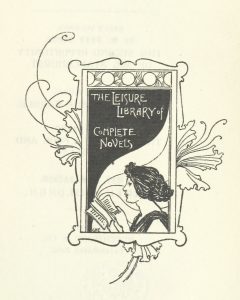The Post-Pandemic Pedagogy project, which I’ve been working on with Marcus Collins (Loughborough), Aimee Merrydew (Keele) and others for the past year (funded by the EMC, History UK and the RHS), involved a survey of History staff and students at UK universities. We asked them about their experiences and perceptions of teaching and learning during the pandemic, as well as their preferences for T&L after the pandemic. Having received over 500 responses, we’re in the process of writing up our report and disseminating the results. While analysing some of the qualitative responses, I was struck by the references to various aspects of online reading, which I thought it would be interesting to review in this post.
The large sample meant that there was a great diversity of responses. There is no single story to be told about experiences and perceptions of reading during the pandemic (or preferences for how it should be done afterwards). For instance, ‘access to resources’ figured prominently – a significant number of student and staff respondents said that availability of primary and secondary sources had improved due to more widespread availability of e-books and other digitised materials (e.g. ‘It has also been very useful to have a much wider range of primary and secondary materials available electronically, as many students did not visit the library to consult physical materials even before the pandemic’ – staff response). Others (not quite as many), however, said that availability had worsened, especially if they wanted to get hold of hard copies or to access archives.
But what about the process of reading itself? As some of the student researchers on our Active Online Reading (LINK) project have noted, History is a reading-intensive discipline (here and here), a point that was also made by one of the student respondents, who felt this meant that shifting classes online was ‘draining and isn’t very stimulating.’ Presumably they preferred classroom-based discussion of reading. One student said that the lack of opportunities for ‘conversation outside of seminars’ meant that they couldn’t ‘help each other understand difficult readings’. A small number of other student respondents also mentioned that it was a challenge to find and complete readings in preparation for class (online or otherwise).
Students also referenced the positive impact of specific online tools and pedagogies for supporting reading. Platforms such as Talis Elevate and MS Sharepoint that allowed students to engage with resources collaboratively were viewed positively. They didn’t just facilitate access to materials, but enabled students to interact with one another effectively, described using terms such as:
- interacting,
- discussing with peers,
- engaging with historical material/ sources,
- commenting,
- seeing fellow students’ comments.
Staff also focused on how certain digital tools had the potential to promote interactive engagement with reading. This ranged from lecturers sharing their screens (or whiteboards) with students for primary source analysis to students working collaboratively on shared editable documents.

Some respondents (staff and students) distinguished between approaches and tools that promoted synchronous (‘real-time’) and asynchronous (‘non-live’) engagement with reading activities. Some commented positively on the use of Blackboard or Talis Elevate to post readings for students to consult and/or comment on in advance of class and to return to later (‘it allows students to go back and see their classmates thoughts and receive weekly feedback from tutors’ – student response). Others emphasised the importance of ‘live’ discussion of reading with peers: ‘doing prerequisite readings and then discussing them in class seemed a much better use of my time and I felt I learnt far more this way’ (student respondent). Interestingly, one student described the process of engaging collaboratively with readings outside of class (i.e. asynchronously) as simulating in-class discussion, suggesting that they saw it as an effective proxy for face-to-face classes (although it should be noted that this puts them in a small minority within respondents to the overall Post-Pandemic Pedagogy project, who expressed a strong preference for face-to-face classes).
Digital platforms and pedagogies that promoted access to and interactivity in relation to readings – whether synchronously or asynchronously – were thus viewed most positively by both students and staff. Those that approximated pre-pandemic face-to-face experiences seem to have been judged most favourably, a finding that may well apply to other elements of our dataset (we’ll find out soon!).
We will be sharing more findings from the Post-Pandemic Pedagogy project over the next few months and welcome your feedback on this and other elements of our work.